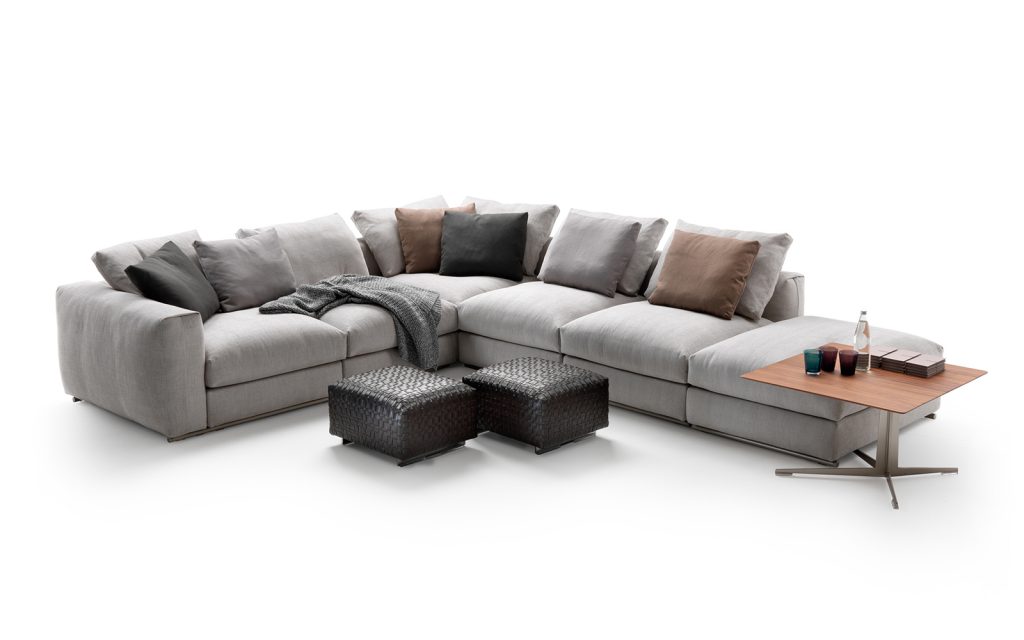Italian Designer Antonio Citterio Explains His 2020 Flexform Collection
Furniture that emphasizes an elegant simplicity, detailed by the Italian designer in a new video

Family-owned Italian furniture manufacturer Flexform launched its first product in 1959. Since, the company has collaborated with dozens of designers, architects and other creatives on essentials for everyday life: couches, chairs, beds and beyond. This year, they tapped Antonio Citterio and Christophe Pillet for expansive collections of their own. To accompany these releases, Citterio sat down with Flexform to reflect on the company’s 60-year history and his award-winning designs for the Meda, Italy-based operation.
 “Talking about my relationship with Flexform means talking about a group of friends who have shared visions and experiences. It also means talking about a big part of my life, given the fact that we have been getting together for over forty years,” Citterio says. He’s worked with Flexform for four decades, establishing a suite of signature pieces and broader product families along the way. Of the many designers Flexform has enlisted for their projects, Citterio is one of their closest collaborators. An architect and interior designer with the ability to understand a piece’s context (how it fits in with its surroundings and how those surroundings converse with the grander design scheme), he pays careful attention to the items he introduces to Flexform’s team. Oftentimes, they’re immediate successes—identifiably ingenious even from afar. Other times, Citterio’s designs boast nuanced layers: mechanisms for modularity, references to previous works and homages to bygone fixtures.
“Talking about my relationship with Flexform means talking about a group of friends who have shared visions and experiences. It also means talking about a big part of my life, given the fact that we have been getting together for over forty years,” Citterio says. He’s worked with Flexform for four decades, establishing a suite of signature pieces and broader product families along the way. Of the many designers Flexform has enlisted for their projects, Citterio is one of their closest collaborators. An architect and interior designer with the ability to understand a piece’s context (how it fits in with its surroundings and how those surroundings converse with the grander design scheme), he pays careful attention to the items he introduces to Flexform’s team. Oftentimes, they’re immediate successes—identifiably ingenious even from afar. Other times, Citterio’s designs boast nuanced layers: mechanisms for modularity, references to previous works and homages to bygone fixtures.
“When I think about design in general, a story of families always comes to mind, especially in furniture design. Stories of people and families,” Citterio explains in an exclusive video meant to commemorate the 2020 furniture collection. In it, he says that his relationship with Flexform is undoubtedly personal, but that the professional parts have been just as fulfilling. “The story of my relationship with Flexform, it runs through the everyday product, the normality of everyday life. We set out with the idea of making elements, supports upon which we simply placed cushions. Clearly, in the 45, 47 years of our partnership, we have tried many of these ideas. But, essentially, there is normality in the results.”

Citterio points out the approachability of his designs. They’re constructed with an emphasis on simplicity and enduring quality; the kind of quality that improves our lives, he says. In the Gregory sofa and bed, the Asolo sofa, the Ontario seating system and the Tessa chair, these principles guide the products, but Citterio hides exquisite details just beneath the surface.

Throughout each, sophisticated materials and textiles assume structural tasks. In the Gregory sofa, elastic webbing wrapped in elegant cowhide leather remains exposed, highlighting the support system in place to position the cushions. The Gregory system’s customizability allows for combinations of look, feel and form. “Gregory is an indoor product that started with the same technology in the use of this exposed webbing,” he says. Modularity remains front of mind, he affirms.

The Asolo sofa relies on a more traditional foundation but proves just as agile. Available as a sectional, straightforward sofa or set of two seats, “Asolo is a product that incorporates all the knowhow, the experience and elegance typical of Flexform,” Citterio says.

With the Ontario seating system, the foundational materials take center stage. Solid iroko wood slats joined by sleek cast metal spacers offer a nearly endless number of possible configurations. “Being simple does not mean being commonplace. And clearly, this is how the Ontario design came about,” Citterio says.

For the isolated Tessa armchair, every element must be handcrafted. A solid ash and turned Canaletto walnut frame spotlights centuries-old Italian art: sturdy, woven paper rush cord in the seat and backrest. “Straw, and wicker chairs, have been part of my memory since childhood,” Citterio says of its inception.

“We’ve always sought this idea of intuitive recognition,” Citterio says of his collaborations with Flexform. “A person sees our product and says, ‘Good. I’ll take it.’ For example, many people ask themselves whether a sofa should be comfortable or not. I never ask myself this question because the day I make an uncomfortable sofa, it is no longer a sofa.”
His newest designs arrive informed by decades of experience and a mastery of both sides of the process: his designing and Flexform’s editing and manufacturing. “It is a bit like making a delicious plate of spaghetti with tomato sauce. The right ingredients are a must: the right oil, knowing that you must cook the pasta 110 seconds. Nothing is happenstance… You don’t need to explain it because you see the product and it is evident. You get it.”
Images courtesy of Flexform












